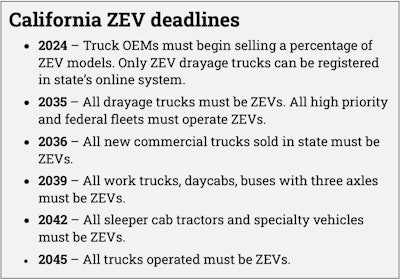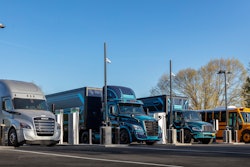Predicting the adoption curve for alternative powertrains in the immediate future has become a point of emphasis for truck makers and industry research experts.
California will begin requiring the sale of truck and bus zero-emission vehicles (ZEVs) next year, with manufacturers only allowed to sell ZEVs by 2036. Other states have announced plans to follow California’s lead, and the United States also has committed to a global Memorandum of Understanding (MOU) to reach 30% ZEV truck and bus sales by the end of this decade and 100% ZEV by 2040.
But with current commercial ZEV sales hovering in the range of hundreds of units by weight class per year, truck buyers are showing little interest supporting these sales mandates.
Increasing alternative powertrain and ZEV adoption to meet state and federal goals will not come organically. Administrators will be forced to enact rules requiring truck owners to use this equipment, or the current barriers slowing adoption will need to be removed.
Manufacturers believe both are likely.
Regulations are already in development. California’s Advanced Clean Fleets rule, officially published in April, will require trucking companies in the state to only operate ZEVs by 2045. The other states committed to California’s truck sales rules have not yet committed to this regulation, but still could. California represents 22% of the American truck market, so even in isolation the state’s rule is groundbreaking.











